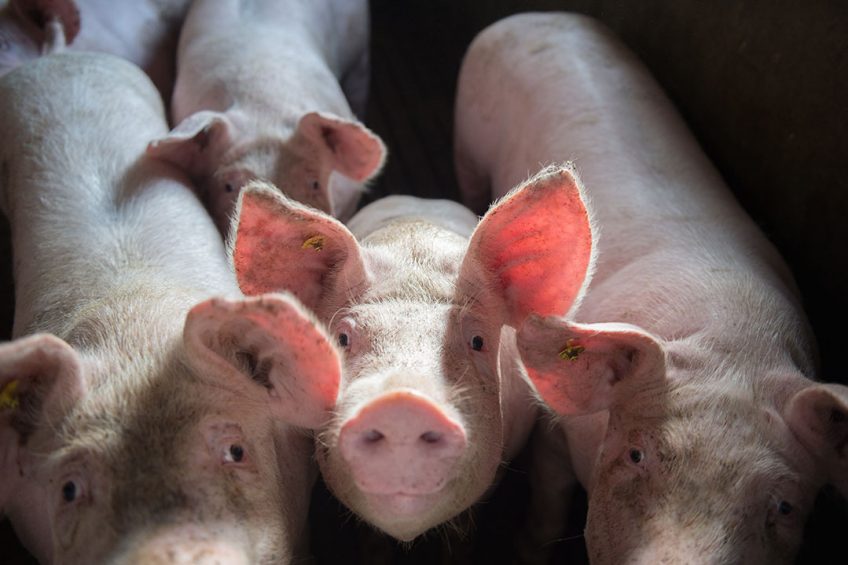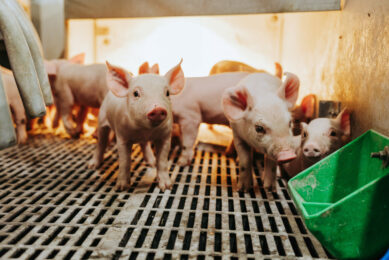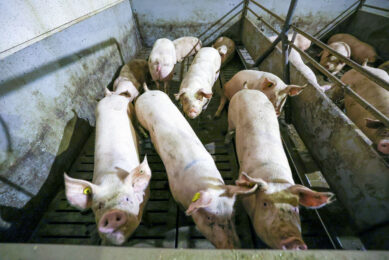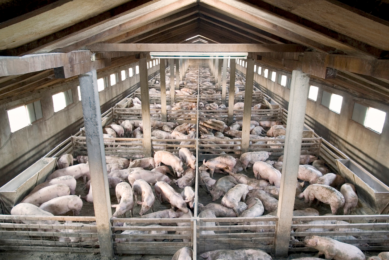Breeding for robustness as the way forward

Breeding strategies can be used to improve pig health. The method is to select individuals with improved response to a specific pathogen challenge – or animals with improved response to a number of diseases. This approach is known as ‘breeding for robustness’. What does that entail?
Thriving despite a tough (pathogen) challenge; that sums up the benefits of the breeding strategy revolving around robustness pretty well. Dr Jenelle Dunkelberger, Topigs Norsvin’s geneticist for the United States, is on top of this concept’s development.

What does robustness actually mean?
“Robustness refers to the ability of an animal to maintain performance following exposure to disease. From a practical standpoint, sometimes you see pigs that, despite being exposed to disease, are able to cope with that challenge and maintain a high level of performance. We would call that a very robust animal.
On the other hand, we also see pigs that, following exposure, develop clinical signs and symptoms of infection, fail to thrive and, in the most extreme cases, die. That’s an example of a particularly non-robust animal. Our goal is to improve robustness to disease – to have more animals that may or may not become infected but, regardless, are able to maintain performance despite a pathogen challenge.”
How can robustness be bred for?
“Our approach is to use traditional breeding strategies to enhance robustness to disease. This is the same technique that we use to improve all of the other economically important traits in our breeding goal. It’s using phenotypes and genotypes to calculate breeding values that can be used to make mating decisions and produce progeny with enhanced performance under challenge. Following a disease challenge, we see evidence of naturally occurring variation in how animals respond to the challenge. When we quantify that variation, we see that a substantial proportion of the phenotypic variation is due to genetics. From this perspective, using traditional breeding strategies to breed pigs with enhanced robustness to disease is very feasible.”
How does robustness work in practice?
“The basic definition of robustness is being able to maintain performance following exposure to a pathogen. There are different reasons why an animal might be capable of doing that. One is that the animal is more resistant to the disease, and the other is that it is more tolerant to the disease.
Resistance refers to the ability of the animal to somehow block or suppress the lifecycle of the pathogen. A pig might be more resistant because it is able to block that pathogen from entering and infecting the host cells; that is one possibility. Or it can limit the replication of that pathogen once it is infected.
Tolerance refers to the ability of that animal to maintain performance despite pathogen level. So if an animal is completely tolerant, it doesn’t matter how much virus it is infected with – it is able to maintain the same level of performance.”
Will the sophisticated technology available today allow you to dive a lot deeper into the data and make more educated choices?
“Exactly. We can identify individual genes or subsets of genes that are associated with superior performance during a challenge.”
Why do you consider breeding for robustness to be sustainable?
“Robust animals, by definition, are less affected by a disease challenge and therefore require fewer antibiotics. For many of the large producers in the US, decreasing antibiotic usage is part of their long-term strategy to enhance sustainability. Breeding pigs for enhanced overall robustness to disease is also a good insurance policy. Using this approach, we are breeding pigs that will perform well not only in the face of current disease challenges, but to future disease challenges too.
So, how can we produce pigs with enhanced robustness to disease? There are two main approaches – traditional breeding and gene editing. Traditional breeding is the process we already use to improve the traits in our breeding goal. It’s well established and effective, and there aren’t any issues with the acceptance of this approach. The same is not true for gene editing, for which a number of questions remain regarding regulatory approval for use in livestock (at least in the US) and consumer acceptance. If you compare these two approaches, you could also argue that traditional breeding is more sustainable than gene editing based on the number of resources required to produce an animal with enhanced robustness to disease via gene editing, compared to using traditional breeding.”
It’s not clear yet if gene editing will be regulated as genetically modified in the US
What makes you feel that conventional breeding for robustness is the way ahead?
“At this point in time, in the US and some other places around the world, we just don’t know how gene-edited products will be labelled or regulated. We don’t have to worry about this with traditional breeding – we are able to use traditional breeding to produce pigs with enhanced robustness to disease now.
We also think it is more in line with what our current and future consumers are asking for. In the US market, we see a considerable increase in the demand for all-natural and non-GMO products, sustainable agriculture and organic production. It’s not clear yet if gene editing will be regulated as genetically modified in the US. This is a concern for a number of large producers and packers, so they are hesitant to embrace it. For all of these reasons, we believe that traditional breeding is more aligned with the desires of our future consumers.”
Porcine Reproductive and Respiratory Syndrome (PRRS) is one of the health issues that jumps to mind when speaking of creating robust animals. What have your trials shown so far?
“We conducted a large-scale challenge trial with PRRS, using a highly virulent strain. We wanted to get an understanding of what variation in response to that type of challenge looked like. One of the objectives was to compare the robustness of our animals to animals sired by a competitor line. Results showed that animals sired by the TN Tempo line were significantly more robust to disease challenge. We also observed substantial variation in response to challenge within this group.”
Can you give a practical example of a successful development using the breeding for robustness approach with regard to PRRS?
“A major research consortium was formed a number of years ago that included multiple universities and the US Department of Agriculture. The major finding from that work was the identification of a major region located on chromosome 4. The region was associated with a large proportion of genetic variation in performance under PRRS challenge. We refer to this region as the ‘WUR SNP’. In March 2018, Topigs Norsvin added PRRS resistance to the breeding goal for our lines. We are using an individual’s genotype at the WUR SNP to facilitate selection for enhanced PRRS resistance. The favourable WUR genotype does not confer complete PRRS resistance, as gene editing would, but it’s natural, it’s partial resistance and it’s already in place.”
How about pathogens other than PRRS virus?
“That is the ultimate goal. We want to capitalise on naturally occurring variation in response to disease, to improve two diseases specifically, PRRS being one of them, Streptococcus suis being the other. We chose to target these two diseases specifically because of the high economic impact of these diseases, and because they are difficult to control using traditional disease control strategies. Our larger goal, however, is to improve overall robustness to disease challenge.”











